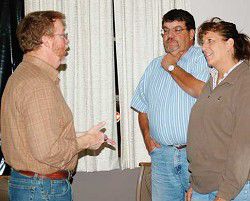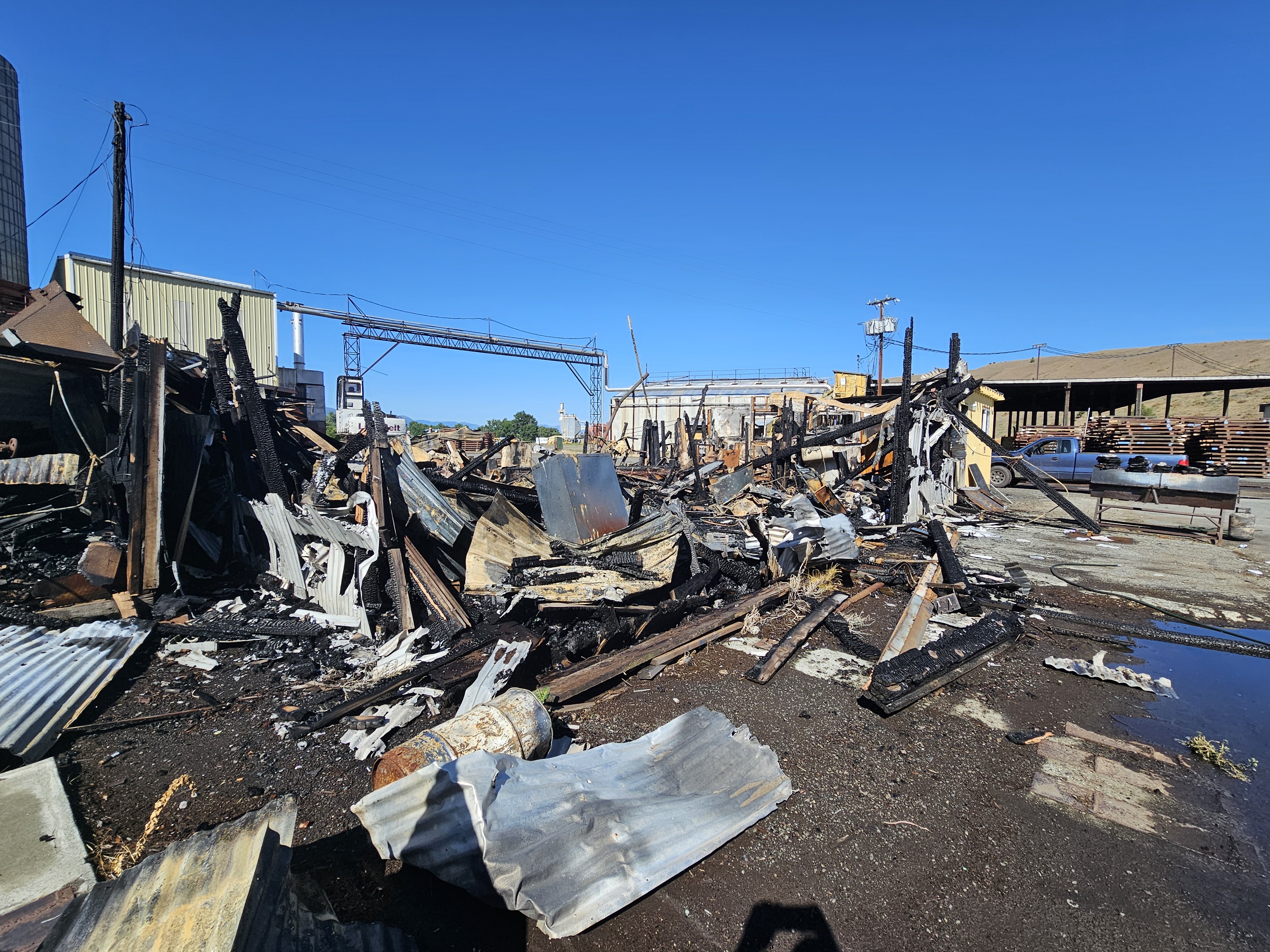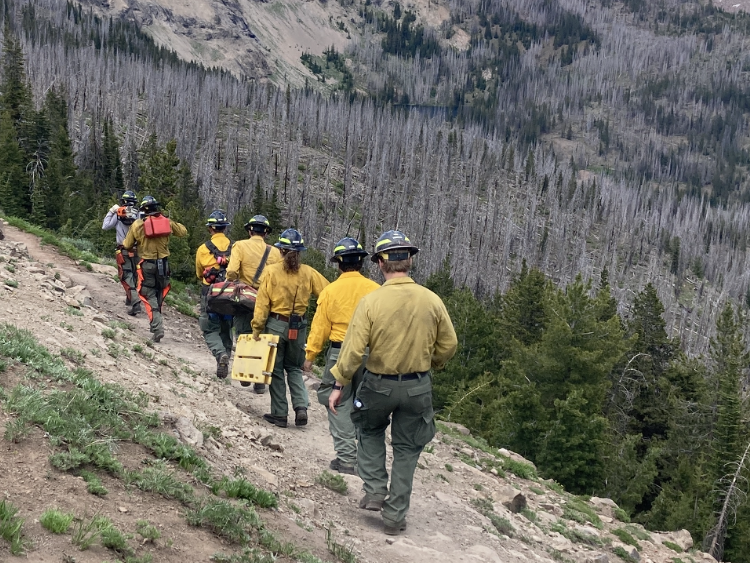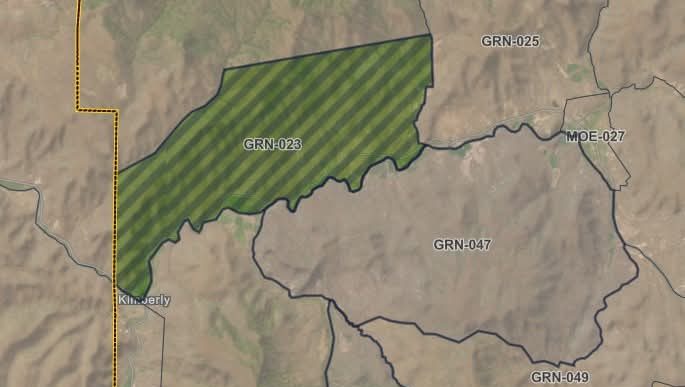Program brings era of Basque herders to life
Published 5:00 pm Tuesday, September 30, 2008

- Kent McAdoo (left) of Elko, Nev. spends time with Loren Thissel and Juanita Onaindia of Mt. Vernon after his Basque Herders presentation Sept. 26 at the Canyon City Community Hall. <br>The Eagle/Angel Carpenter
CANYON CITY – Kent McAdoo had a “once in a lifetime experience” in the early 1970s, traveling with Basque sheepherders for 13 months.
Trending
He and his wife, Kathy, stayed in a 15-foot camp trailer as they followed the Goicoechea sheep operation in northeastern Nevada. They trailed their animals over hundreds of miles of rangeland.
The adventure started as McAdoo conducted research on the effects of coyote predation on domestic sheep. At the time, he was a graduate student working on a master’s degree at University of Nevada in Reno.
The journey left McAdoo with a deep appreciation for the Basque culture and the friendships he forged with the herders.
Trending
The Grant County Library Foundation invited McAdoo, who is now a natural resources specialist for the University of Nevada Cooperative Extension, to visit the community hall in Canyon City Sept. 26 to share what he learned about the Basques and keep their history alive.
The program was part of Libraries of Eastern Oregon’s “A Sense of Place” series.
The 20 or so people attending “Basque Herders: The End of an Era,” included Juanita Onaindia of Mt. Vernon, who is Basque and speaks the language fluently. Others in the audience knew Basque people and had visited their sheep camps.
Most of the Basque people McAdoo met were from Spain, others were from the south of France.
McAdoo told of his experience through a PowerPoint slide show and stories of life with the herders, learning their language, eating their delicious food – he was especially fond of their chorizo sausages and bread – and helping in their arduous work, absorbing their techniques.
Coyotes were “quite a big thing to contend with,” McAdoo said, particularly in May, during open range lambing, and during the latter half of summer.
McAdoo noted that 35 sheep were lost to coyotes in 31 days from mid-August to mid-September. He later added that during the year 4 percent of the herd was lost to coyotes.
Late summer brought higher losses because coyote pups were at a stage where they required more meat, and the ground squirrels which were available all summer had gone into estivation.
McAdoo explained the lengths herders went to in order to care for their sheep.
When a lamb was orphaned, they would pair it with a ewe who had just lost a lamb – even covering the orphan with the skin of the mother ewe’s dead lamb to help her bond with the orphaned lamb.
The herders moved about 2,000 sheep with 65-85 black sheep in the group.
At the beginning of each day, during trail routes between seasonal ranges, the herders with their dogs would bottleneck the sheep and count the blacks.
“If one black sheep was missing, there was a good chance that several other sheep were also missing, so they would search back along the trail route until the missing sheep were found,” McAdoo said.
It was through tasks such as counting sheep that McAdoo discovered one part of the Basques’ complex language called Euskera.
Their counting is based on twenties, so the number 77 in Euskera, “iruetamarzazpi,” translates “three times 20 plus 17.”
There is a saying that the Basque can’t go to hell because the language is so difficult that the devil can’t understand it; therefore he can’t tempt them.
In the 70s, there was no English/Basque dictionary so McAdoo would use an English/Spanish dictionary and then his friends would translate words into Basque for him.
Under the rule of Spanish dictator Francisco Franco, Basques weren’t allowed to learn to read or write their language in school, nor to speak it in the streets. In fact, none of the herders McAdoo met knew how to read or write in Basque with the exception of one who had planned to become a Catholic priest.
After Franco died in 1975, things started getting better in Spain, McAdoo said. Many of the herders returned to Spain, but some remained in the U.S.
“More importantly, the immigration of young Basque herders to the U.S. declined markedly. During 1970, 90 percent of sheepherders on western rangelands were Basque, but by 1976 only 14 percent were Basque,” McAdoo added.
Those who remained moved on to different trades. And the Basque sheepherders were replaced by Chileans, Mexicans, Peruvians and others.
“These guys are good herders, too,” McAdoo said.
In the 1900s, there were millions of sheep roaming the rangelands of the high desert, including Eastern Oregon.
In 1972, about the time McAdoo traveled with the herders, there were 300,000 sheep in Nevada, and the numbers continued to decline to 80,000 in 1998 and 74,000 in 2006.
McAdoo attributes several possible circumstances to the decline: a switch to cattle ranching, tariffs, declining wool prices, predation, the labor-intensive nature of the business, disease exchange with bighorn sheep, and other factors.
Today, the old corrals, sheep camps, aspen carvings and occasional festivals are left to keep the Basque heritage alive.
“The Basques left physical vestiges,” McAdoo said. “But more importantly, they’ve impacted the culture of the high desert.”
The presentation brought back a lot of memories for Harriet Crum of John Day, who knew a French Basque family when she lived in northern California.
“A lot of them are now in the cattle business – big operations,” she said.
Loren Thissel, who came to the presentation with Onaindia, likened the declining sheep herds to the dwindling sawmills.
Onaindia, who grew up sheep herding with her Basque family in Enterprise, said she found the program “informative.” As a child, she only spoke Euskera and never learned to read or write in that language – she said her mother grew up under Franco’s rule.
She learned English in school, but only Basque was spoken at home. If she tried to call her father “Dad” in English, he wouldn’t respond.
She shared stories from her life sheepherding with her family – with no roads or sheep wagons.
“Until you live it, you have no concept,” she said.









